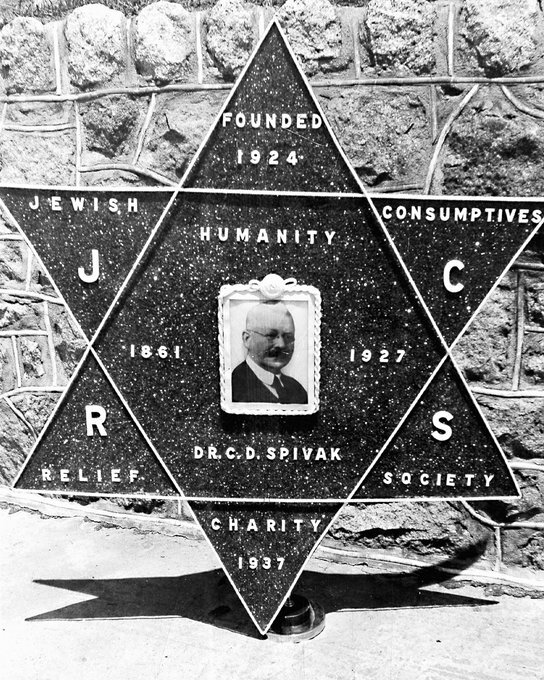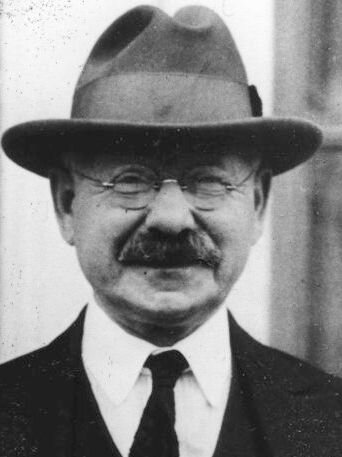In a chapter that deals with the rules of inheritance, there is this interesting aside:
ההוא דאתא לקמיה דרבי חנינא אמר ליה מוחזקני בזה שהוא בכור אמר ליה מנא ידעת אמר ליה דכי הוו אתו לגבי אבוה אמר להו זילו לגבי שכחת ברי דבוכרא הוא ומסי רוקיה ודלמא בוכרא דאמא הוא גמירי בוכרא דאבא מסי רוקיה בוכרא דאמא לא מסי רוקיה
A certain person once came before R. Hanina and said to him, 'I am sure that this man is firstborn'. R. Hanina said to him, 'How do you know?' — The person replied to him: 'Because when people came to his father, he used to say to them: "Go to my son Shikhath, who is firstborn and his saliva heals'. Might he not have been the firstborn of his mother only [but not of his father]? There is a tradition that the saliva of the firstborn of a father heals, but that of the firstborn of a mother does not heal.
Being declared a firstborn son was a big deal in talmudic times, for that lucky son would inherit twice the share of any other brothers. (Daughters only inherit where there are no sons, or offspring of sons.) In the case brought before R. Hanina, there were two claims. One, that the Shikhath was a firstborn, based on the fact that his father called him "firstborn", and second that he was his father's firstborn by any woman. The evidence for that is the claim that his saliva heals. In talmudic society, only the saliva of a firstborn of a father heals. In his commentary on this passage, the Rashbam adds that the healing properties of saliva refer to its use as an eye medication. What are we to make of these claims that saliva heals, but only if it is the saliva of a firstborn son?
The many functions of human saliva
Saliva is an amazing material, and one we too often take for granted. The many functions of saliva were reviewed in a paper published in The Archives of Oral Biology in 2015. We make a lot of it - about half a liter per day - and we need it to moisten and lubricate our mouths. It plays a critical role in taste, since it helps dissolve the foods into components that transmit taste on the tongue. Saliva is also a key component of digestion. One of its main components is alpha-amylase, which appears to have a role in the breakdown of starch. It also protects the oral mucosa and esophagus not only by acting as a lubricant, but by buffering the acids in the stomach that sometimes make their way north into our mouths. The dentists among you will already know that saliva protects the teeth against abrasion, attrition, erosion, and dental caries, by removing uneaten food debris from the mouth. This debris, especially if sugary or acidic, can damage our teeth when bacteria feed off them. Saliva also has activity against bacteria, viruses and fungi. For example, submandibular saliva inhibits the HIV-1 virus, even when diluted several-fold, and saliva inhibits the growth of candida, an opportunistic oral fungus.
Saliva and wound healing
Last year, scientists from Lahore in Pakistan tested the ability of human saliva to heal wounds. They collected saliva from 24 willing human spitters, and applied the saliva to 2cm x 2cm wounds on the backs of thirty "fully grown adult male rabbits weighing 2.0 to 3.4kg..." Three rabbits were controls and received no treatment. Another three had standard antibiotic ointment applied to their wounds, and the remaining lucky 24 rabbits had saliva applied every two hours for two weeks. The Pakistani scientists noted "the healing speed of wounds on which saliva was applied was higher than the wounds on which wound healing medication (polyfax) was applied, and there was pus formation in the wound of negative control on which natural healing was observed." They concluded that "healthy human saliva possess significant (p<0.05) antimicrobial as well as wound healing properties. This innate ability of human saliva, mainly attributed to histatin protein, suggests that salivary proteins can be further used for medicinal purposes."
Wound healing properties of saliva, polyfax, and control on induced wounds on the backs of rabbits. From Haq et al. Antimicrobial and Wound Healing Properties of Human Saliva. Int. J. of Pharm. Life Sci. 2016. 7 (2); 4911-4917.
“Healthy human saliva possess significant antimicrobial as well as wound healing properties. This innate ability of human saliva, ... suggests that salivary proteins can be further used for medicinal purposes.””
The histatins to which the Pakistani researchers referred are a group of proteins in the saliva which in 2008 were found to promote wound healing. Cuts in the mouth heal much more quickly than do cuts elsewhere on the body: researchers have found that "wounds in the oral cavity heal much faster than skin lesions, with similar wounds healing in 7 days in the oral cavity compared with several weeks on the skin," and this is thought to be due to these histatins in the saliva.
The mouth is a very dirty place
A nasty fight-bite injury, due to bacteria found in the mouth.
All this sounds rather interesting and would seem to support the use of saliva to heal, just as the saliva of Shikhath was said to do in today's page of Talmud. If however you find yourself with a wound and no local pharmacy, you might want to consider this before licking yourself. The mouth is a terribly dirty place, microbiologically speaking. It is full of nasty bacteria viruses and fungi, which the saliva only just manages to keep at bay. I have seen dozens of "fight-bites" in the ED. They are the outcome of a fist hitting a tooth (usually late on a Saturday night) and the hand often becomes badly infected as the bacteria in the victim's mouth, now safely hidden away deep in the crevice of the wound on the assailant's knuckle, go to work. The result isn't pretty.
Vespasian, and others who healed with their saliva
The belief that saliva can heal the eyes is not limited to today's page of Talmud. You can find a detailed history in the 1891 paper by Frank Nicolson, The Saliva Superstition in Classical Literature. Perhaps one of the most striking examples of saliva as an ophthalmic medication is from the works of Tacitus, a Roman senator and historian, who died around 120 CE. In his Histories, he recounts the story of Vespasian, - the same Vespasian who fought the Jewish insurrection in Judea and whose son Titus destroyed the Second Temple in 70 CE.
In the months during which Vespasian was waiting at Alexandria for the periodical return of the summer gales and settled weather at sea, many wonders occurred which seemed to point him out as the object of the favor of heaven and of the partiality of the Gods. One of the common people of Alexandria, well known for his blindness, threw himself at the Emperor's knees, and implored him with groans to heal his infirmity...He begged Vespasian that he would deign to moisten his cheeks and eye-balls with his spittle... Vespasian, supposing that all things were possible to his good fortune, and that nothing was any longer past belief, with a joyful countenance, amid the intense expectation of the multitude of bystanders, accomplished what was required...the light of day again shone upon the blind. Persons actually present attest [this fact], even now when nothing is to be gained by falsehood.
(In case you were wondering, Vespasian was not a firstborn, but the third child born to his parents.)
Jesus is also said to have healed the blind with his saliva, as told in Mark 8:23-25:
They came to Bethsaida, and some people brought a blind man and begged Jesus to touch him. He took the blind man by the hand and led him outside the village. When he had spit on the man’s eyes and put his hands on him, Jesus asked, “Do you see anything?” He looked up and said, “I see people; they look like trees walking around.” Once more Jesus put his hands on the man’s eyes. Then his eyes were opened, his sight was restored, and he saw everything clearly.
This sort of thing carried on in a slightly different version through the Middle Ages. It involved not spittle, but touch. Here is Jack Hartnell, a lecturer in art history at the University of East Anglia in Norwich in the UK describing the healing power of kings in his 2018 book Medieval Bodies (p199).
[B]y the later Middle Ages. the touch of a monarch themselves, especially immediately after such coronation rites, had reciprocally been transformed into a much-prized thing. So charismatic was this touch that in certain cases it was even thought to have the ability to heal various illnesses through royal caress. Srofula, a form of tuberculosis of the lymph glands causing large sores and swellings around the neck, was a disease that became so associated with this type of monarchial healing that it took the Latin name morbus regius, the ‘regal disease’ or, sometimes, the ‘king’s evil.’ From the eleventh century onwards its French and English victims were granted special audiences with their respective monarchs to receive this miraculous cure. Records are hazy as to how precisely such healing touches were given: some royals may have employed a lingering stroke of the face and neck, while others may have had to do with a simple pat on the head. Either way, the hands of the king carried immense power.
In sum, the belief that saliva could heal the eyes and cure the blind was not only found in Jewish culture, but was part of Roman and early Christian legend. We now know that purified saliva does contain proteins and growth factors with anti-microbial and wound healing properties. However, the notion that saliva taken from the mouth might be helpful for failing eyesight is entirely without scientific foundation, because you are more likely to introduce an infection than you are to cure one. Even if you are a firstborn, an emperor, or a messiah.





















